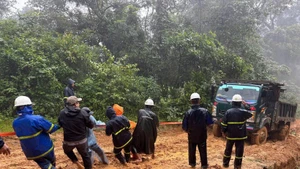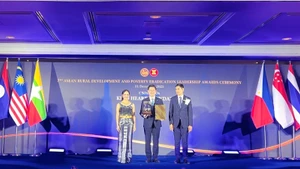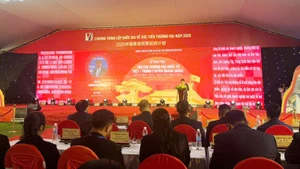In the past, many highland villages in Ha Giang Province lacked access to the national electricity grid, which significantly impacted economic and social development and the improvement of residents’ quality of life. In some areas, residents relied on temporary electricity sources, leading to unstable power quality and high costs.
In recent years, local authorities and Ha Giang Electricity Company have pooled resources to invest in building rural electricity infrastructure. Numerous projects have been implemented with the aim of bringing electricity to every household, even in the most remote areas. The 17th Provincial Party Congress Resolution set the target that all border villages have electricity by 2025.
Since 2021, nearly 160 projects have been implemented across the province to provide electricity to highland villages. Rural electricity infrastructure projects in the province are funded by various programmes and sources, including: the project for providing electricity to remote and ethnic areas without access to the national grid (Phase 1); the 2018-2020 rural electrification project funded by the EU; rural electrification from the national grid using ODA funds; and funds from the new-style rural development programme and the national target programme for socio-economic development in ethnic minority and mountainous areas.
Along with local authorities’ efforts, the electricity sector has implemented a range of measures to achieve the province’s targets. In 2024 alone, Ha Giang Electricity Company carried out 33 electricity projects, 15 of which have been completed and connected to the grid to serve residents. New construction, renovation, and upgrade of substations and power grids not only ensures stable electricity supply but also improves service quality, ensuring safety and efficiency.
As a result, all communes and towns now have access to the national grid in their centres; nearly 93% of villages across the province have electricity; nearly 95% of households in the province use the national grid; and 123 out of 134 border villages, or 99.19%, now have national grid access.
In mid-July this year, Ha Giang Electricity Company began construction on a new medium- and low-voltage power grid project to supply power to the northernmost point in Lung Cu Commune, Dong Van District. With a total investment of nearly 6.6 billion VND, the project includes: 1.835 km of new 35kV power lines, one 35/0.4kV distribution substation with a capacity of 100kVA, and 2.541 km of low-voltage power lines.
According to Ma Doan Khanh, Chairman of the People’s Committee of Lung Cu Commune: “The electricity sector’s investment in the northernmost point of the country is essential for promoting economic and social development and ensuring national security and defence. It also boosts tourism and services, as this area is currently attracting a large number of visitors.”
Despite significant achievements, the electricity sector still faces challenges in ensuring electricity supply for all remote and isolated villages in Ha Giang. Areas with challenging terrain, harsh climates, and sparse populations require more innovative and flexible solutions from both local authorities and the electricity sector to continue expanding the grid.
Moreover, local authorities and the electricity sector are actively resolving issues related to the handover of state-funded electricity infrastructure to the local electricity sector for management. According to officials, hundreds of electricity projects in the province, funded by local authorities and project management units, have not yet been handed over to the local electricity sector for management. Some of these projects are already operational but have not transferred assets to the electricity sector, forcing residents to buy electricity at higher rates due to reliance on master meters.
Efforts to bring electricity to the highland areas of Ha Giang provide clear evidence of the Party and State’s attention to ethnic minorities. Electricity is not only lighting up villages and transforming the face of the highlands but also opening numerous opportunities for people to develop economically and achieve sustainable poverty alleviation.
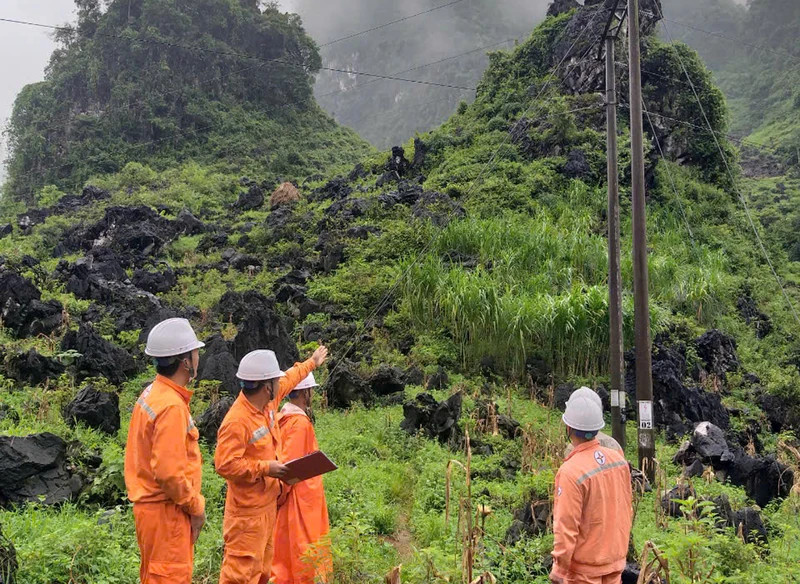
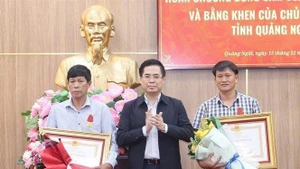

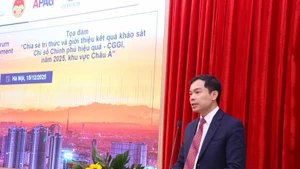
![[Video] Ha Noi: Specialised policies drive sustainable poverty reduction breakthroughs](https://en-cdn.nhandan.vn/images/8f440db7b9bfe62cb5397a6750a8b01bbaf06a77cd3ba844b6a06b6142d24086491b89243c34896c7911c3e80101275f91bf1e90a5f8d4ce13dc0f62a878f516/hanoi.jpg.webp)





